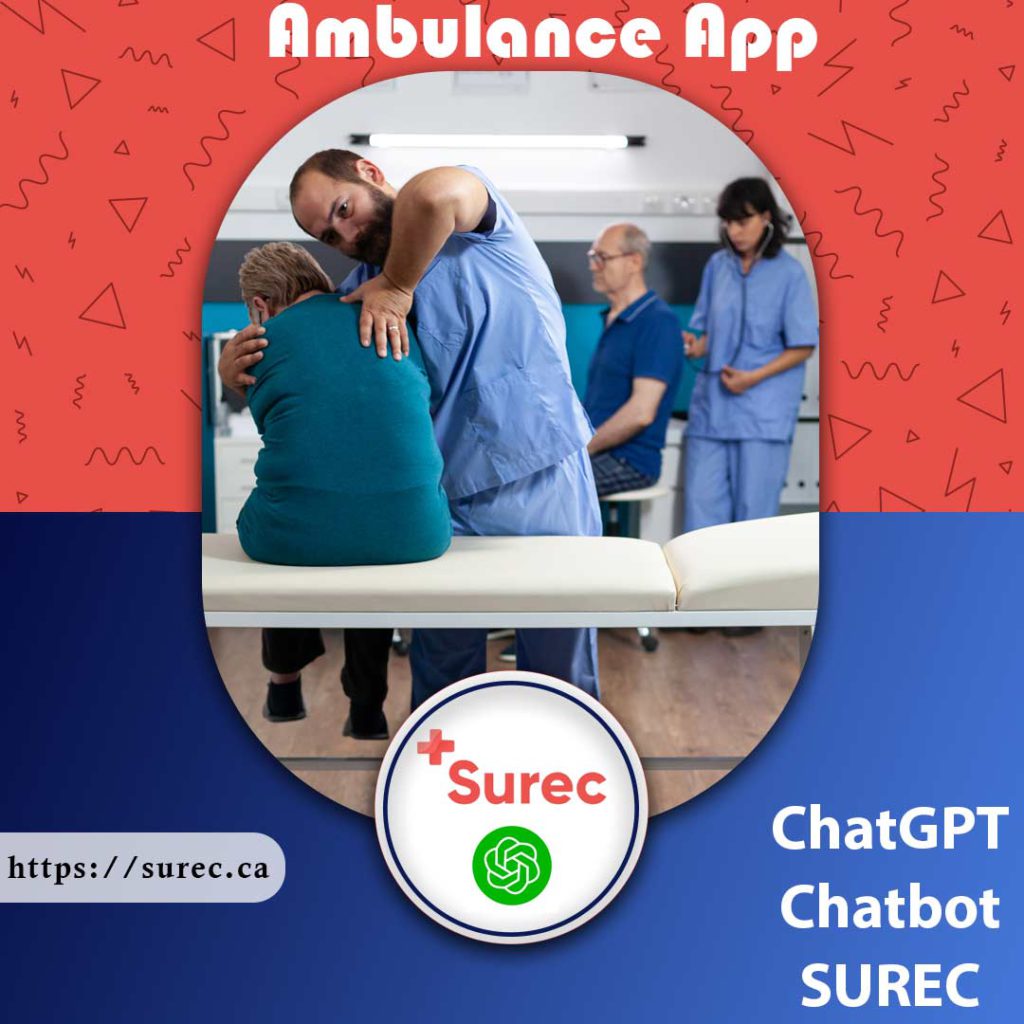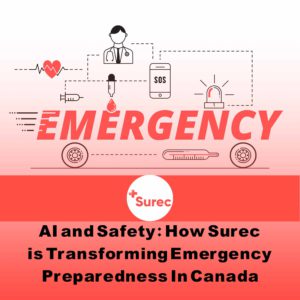The Benefits of a ChatGPT chatbot in Ambulance Apps to Improve Emergency Care in Canada
Emergency care is a critical aspect of healthcare, and it is essential that we have efficient and effective systems in place to provide timely and quality care to those in need. In Canada, ambulance services play a vital role in emergency care, with paramedics responding to over 1.5 million calls each year. However, the current system is facing several challenges, including overcrowding in emergency departments, a shortage of healthcare professionals, and delays in treatment. One potential solution to these challenges is the integration of ChatGPT chatbot technology into ambulance apps. In this article, we will explore the benefits of introducing a ChatGPT chatbot in ambulance apps and how it can improve emergency care in Canada.
The Role of Ambulance Apps in Emergency Care:
In recent years, ambulance services have started using mobile apps to improve the delivery of emergency care. These apps provide several benefits, including:
Efficient Communication: Ambulance apps allow paramedics to communicate quickly and efficiently with hospitals, providing essential information about the patient’s condition and treatment.
Real-Time Tracking: Ambulance apps can track the location of ambulances in real-time, allowing for faster response times and improved patient outcomes.
Medical Information: Ambulance apps can provide access to medical information, including patient histories and medication lists, allowing for more informed treatment decisions.
Community Engagement: Ambulance apps can engage with the community, providing education and information about emergency care and promoting healthy living
The Role of ChatGPT chatbot in Emergency Care
ChatGPT chatbots are computer programs that can simulate human conversation, providing a personalized and interactive experience for users. In recent years, chatbots have been used in various industries, including healthcare. In emergency care, chatbots can provide several benefits, including:
-
Quick and Accurate Assessment: ChatGPT chatbot can assess patients' symptoms and provide recommendations for care quickly and accurately, potentially saving time and improving patient outcomes.
-
Improved Triage: ChatGPT chatbot can help prioritize patients' needs, ensuring that those with more severe symptoms receive treatment more quickly.
-
24/7 Access: ChatGPT chatbot can provide 24/7 access to medical advice and information, ensuring that patients can receive assistance at any time.
-
Reduced Pressure on Healthcare Professionals: ChatGPT chatbot can help reduce the burden on healthcare professionals, allowing them to focus on patients who require more intensive care.
SUREC is an ambulance app that has integrated a ChatGPT chatbot into the interface so that users can communicate with the ambulance
It helps reduce the stress and wait time for patients needing urgent medical attention. The app uses an AI-driven ChatGPT chatbot to quickly and accurately assess the medical needs of the patient, and direct them to the appropriate medical facility. This can help to save lives by reducing the time it takes for patients to get the medical help they need. The app also provides medical advice and reminders to help users maintain their health. It is a great example of how AI is being used to improve healthcare.
Integrating chatbots into ambulance apps can provide significant benefits for emergency care in Canada.
Here are some ways ChatGPT chatbot can be integrated into the ambulance app SUREC
Symptom Assessment: ChatGPT chatbot can assess patients’ symptoms and provide recommendations for care, allowing for faster and more accurate treatment decisions.
Triage: Chatbots can help prioritize patients’ needs, ensuring that those with more severe symptoms receive treatment faster.
Medical Information: Chatbots can access medical information, including patient histories and medication lists, allowing more informed treatment decisions.
Education and Information: Chatbots can provide education and information about emergency care, promoting healthy living and reducing the healthcare burden.
Benefits of Introducing a ChatGPT chatbot in ambulance apps
ChatGPT chatbot includes great features like ChatGPT can offer several benefits when introduced to the ambulance app SUREC. They can provide valuable information quickly, such as the location of the nearest hospitals or emergency services. They can also give medical advice and triage services. Additionally, they can provide important health tips and reminders. They can also offer reassurance and support to people during times of crisis. Chatbots can also help reduce the workload of emergency responders. Chatbots can be used to provide emotional support for trauma victims, as well as help family members of those affected. They can also serve as a source of contact for those in need of assistance, providing reassurance and peace of mind. Additionally, chatbots can offer a personalized experience, with tailored advice and guidance based on each individual’s unique situation.

-
Improved Patient Outcomes:
Chatbots can provide quick and accurate assessments, potentially leading to faster and more effective treatment, and improving patient outcomes.
-
Reduced Pressure on Healthcare Professionals:
Chatbots can help reduce the burden on healthcare professionals, allowing them to focus on patients who require more intensive care.
-
Improved triage:
Chatbots can help prioritize patients' needs, ensuring that those with more severe symptoms receive treatment faster.
-
Increased Access to Medical Advice:
Chatbots can provide automated and immediate answers to basic health queries, which can be especially beneficial for people in remote or rural areas with limited access to healthcare. This can reduce the strain on medical resources and help them to focus on more complex cases.
ChatGPT chatbot and the Future of Emergency Care
ChatGPT chatbot integration into ambulance apps represents a significant step towards improving emergency care in Canada. As technology advances, we can expect further innovations in this field. For example, chatbots could be integrated with wearable devices, such as smartwatches, to provide even more personalized and real-time care. Additionally, advances in artificial intelligence and machine learning could allow chatbots to become even more sophisticated, providing increasingly accurate assessments and recommendations.
Conclusion
In conclusion, ChatGPT chatbot integration into ambulance apps has the potential to revolutionize emergency care in Canada. ChatGPT Chatbots can provide quick and accurate assessments, prioritize patient needs, reduce the burden on healthcare professionals, and provide 24/7 access to medical advice and information. As technology advances, we can expect to see even more innovative uses of chatbots in emergency care. This will improve patient outcomes and reduce strain on the healthcare system. However, it is essential to ensure that chatbots provide accurate and reliable information, and their development should be in collaboration with healthcare professionals. With the integration of chatbots into ambulance apps, we can look forward to faster and more efficient emergency care in Canada.







